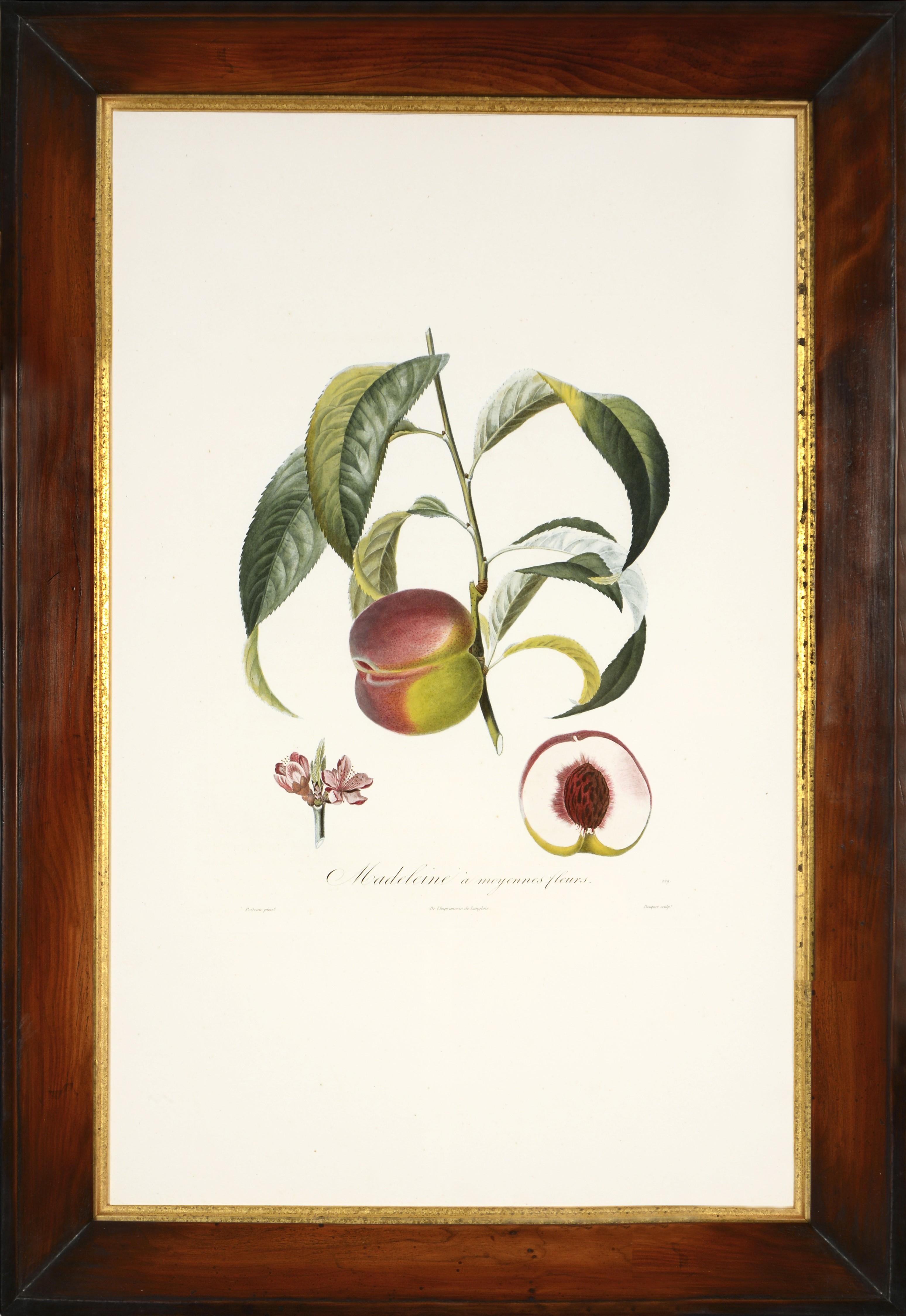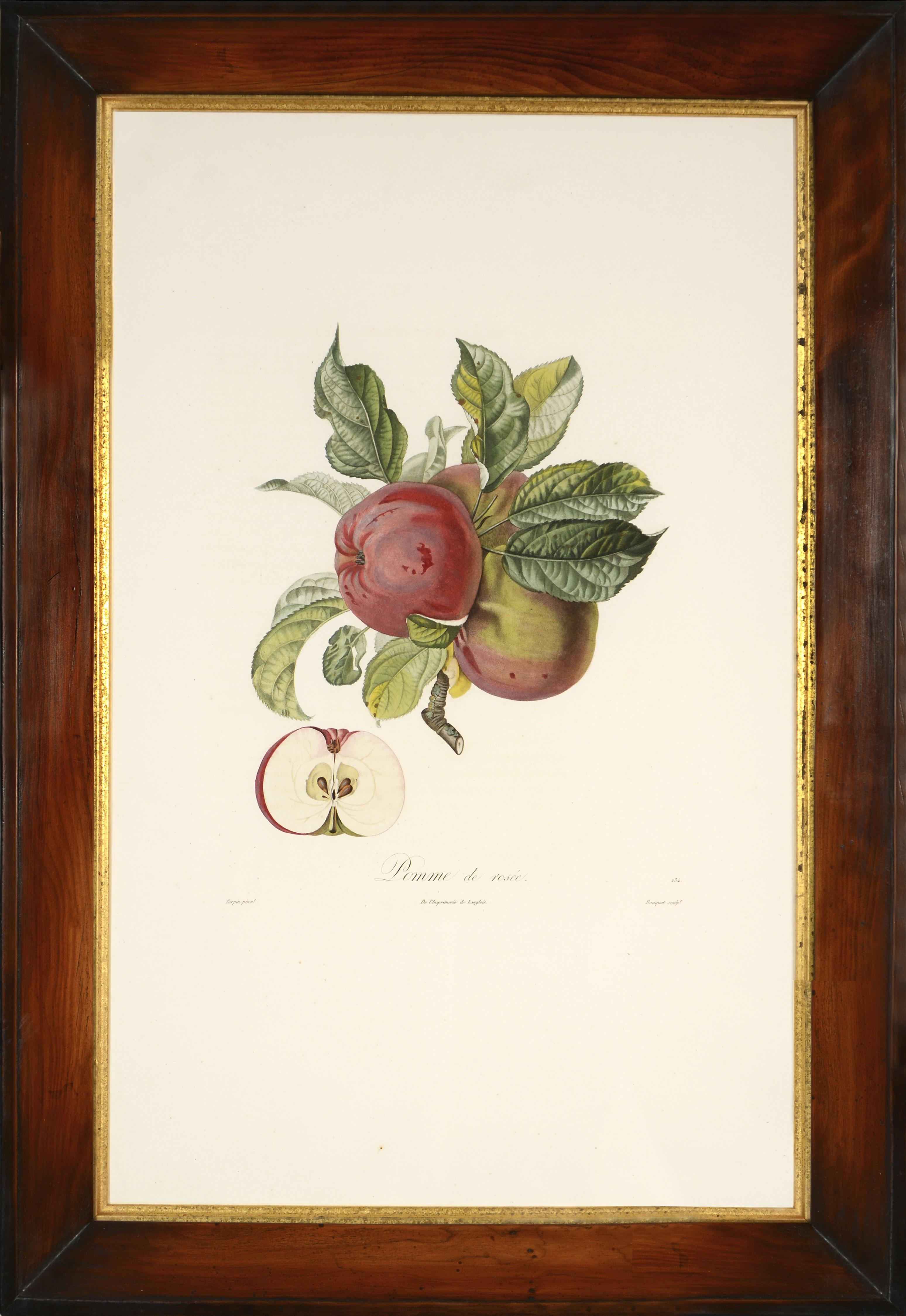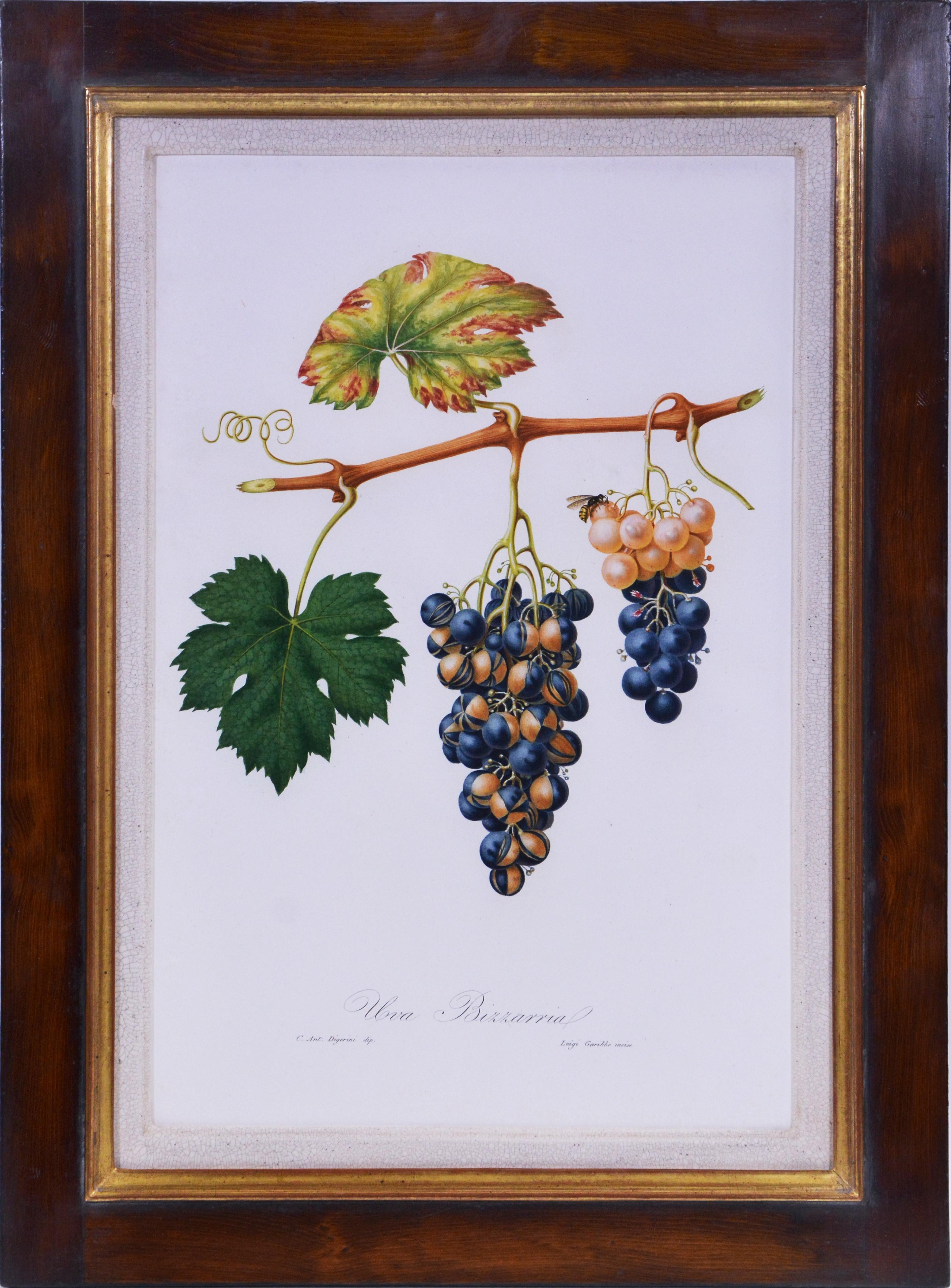Items Similar to BESLER. A Group of Four Peonies.
Want more images or videos?
Request additional images or videos from the seller
1 of 8
Basilius BeslerBESLER. A Group of Four Peonies.1640
1640
About the Item
Four magnificent copper engraved plates with hand-colour from "Hortus Eystettensis", one of the earliest and most famous works in the field.
[Nuremberg and Eichstatt, 1640].
The Hortus Eystettensis is a pictorial record of the flowers grown in the greatest German garden of its time, that of Prince Bishop of Eichstatt, Johann Conrad von Gemmingen.
The garden was begun by Joachim Camerarius in 1596 and, after his death in 1598, completed by Basil Besler, a pharmacist from Nuremberg. A visitor, Philipp Hainhofer, in 1611 marvelled at the eight gardens, each containing 'flowers from a different country; they varied in the beds and flowers, especially in the beautiful roses, lilies, tulips.'
The Hortus records this variety and beauty. The book is exceptional in every sense; in its variety and range of flowers, in its size, in its fine quality of engraving. It is also one of the earliest records of flowers from a specific, documented garden.
Besler was asked to complete the work by Gemmingen in 1606; the huge nature of the task was clear to Besler and he enlisted the help of his younger brother Hieronymus and Ludwig Jungermann, a nephew of Camerarius.
Printing the Hortus may have begun as early as 1607. Drawings were made in situ and from specimens sent by the Bishop to Nuremberg; the Bishop reported to Hainhofer that he had boxes of fresh flowers sent every week to Besler at Nuremberg for sketching. A team of at least 10 engravers were employed to translate the drawings to copperplates.
The gardens, along with most of the town of Eichstatt, were destroyed by the invading Swedish troops under Herzog Bernhard von Weimar in 1633-4, although they were partially restored by later bishops. Many of the original drawings survive in the University Library, Erlangen.
- Creator:Basilius Besler
- Creation Year:1640
- Dimensions:Height: 23.75 in (60.3 cm)Width: 20.16 in (51.2 cm)
- Medium:
- Movement & Style:
- Period:1640-1649
- Condition:Framed and Glazed in handmade silver frames. Overall dimensions: 51.2 x 60.3 cm.
- Gallery Location:London, GB
- Reference Number:
About the Seller
5.0
Vetted Seller
These experienced sellers undergo a comprehensive evaluation by our team of in-house experts.
Established in 1979
1stDibs seller since 2020
11 sales on 1stDibs
Typical response time: 1 hour
- ShippingRetrieving quote...Ships From: London, United Kingdom
- Return PolicyA return for this item may be initiated within 14 days of delivery.
More From This SellerView All
- POITEAU/TURPIN. Traité des arbres fruitiers: A Set of Four PeachesBy POITEAU, A. and P. TURPIN.Located in London, GBPOITEAU, A. and P. TURPIN. Traité des arbres fruitiers: A Set of Four Peaches H. Perronneau for T. Delachausée, Paris 1807-1835. A set of four stipple-engraved plates printed ...Category
Early 1800s Naturalistic Still-life Prints
MaterialsColor, Engraving, Handmade Paper
- Set of Four GourdsBy Johann Wilhelm WeinmannLocated in London, GBSet of 4 double-page mezzotint engravings, printed in colour and finished by hand. [Published: H. Lentz and H.G. Neubauer, Regensburg, 1737]. An attractive collection of fine plates...Category
1730s Naturalistic Still-life Prints
MaterialsHandmade Paper, Engraving, Mezzotint
- POITEAU/TURPIN. Traité des arbres fruitiers: A Set of Four ApplesBy POITEAU, A. and P. TURPIN.Located in London, GBPOITEAU, A. and P. TURPIN. Traité des arbres fruitiers: A Set of Four Apples H. Perronneau for T. Delachausée, Paris, 1807-1835. A set of Four Apples, fine stipple-engrave...Category
Early 1800s Naturalistic Still-life Prints
MaterialsHandmade Paper, Engraving, Watercolor
- POITEAU/ TURPIN. Traité des arbres fruitiers: A Set of Four Cherries.Located in London, GBA set of four stipple-engraved plates printed in colours and finished by hand. Four plates from 'One of the finest and rarest books on fruit' (Dunthorne p.192). This series takes it...Category
Early 1800s Naturalistic Still-life Prints
MaterialsHandmade Paper, Color, Engraving
- GALLESIO. A Group of Six Grapes.Located in London, GBSix hand-coloured plates of Grapes, printed in colour and finished by hand. Framed and glazed, overall size: 42.5 by 57.5cm. Pomona Italiana Ossia Trattato Degli Alberi Fruttiferi...Category
1810s Naturalistic Still-life Prints
MaterialsHandmade Paper, Engraving
- REDOUTÉ. Musa paradisiaca - BananaBy Pierre-Joseph RedoutéLocated in London, GBStipple-engraved plate of Bananas printed in colours and finished by hand. [Chez l’Auteur, Paris, 1802] The highest peak of Redoute's artistic and botanical achievement... Among the most important monuments of botanical illustration ever to be published." (Frans A. Stafleu, "Redoute - peintre de fleurs" in A Catalogue of Redouteana). Redoute was at the height of his powers during the publication of Les Liliacees. It is easily the equal in accomplishment of its more popular successor, Les Roses. The work is broader than its title implies, including as it does petaloid monocotyledons in general belonging, for example to Commelinaceae, Bromeliaceae, Liliaceae, At this time, he had as patron and sponsor Josephine...Category
Early 1800s Naturalistic Still-life Prints
MaterialsHandmade Paper, Engraving
You May Also Like
- Ballota (Horehound); Marrubium (White Horehound) /// Botanical Botany Plants ArtBy Georges-Louis Leclerc, Comte de BuffonLocated in Saint Augustine, FLArtist: Georges-Louis Leclerc, Comte de Buffon (French, 1707-1788) Title: "Ballota (Horehound); Marrubium (White Horehound)" (Didynamie, Gymospermie, Plate 508) Portfolio: Histoire N...Category
1740s Naturalistic Still-life Prints
MaterialsWatercolor, Engraving, Laid Paper, Intaglio
- Mimufops (Mimusops); Ibricaria (Shingle Oak) /// Botanical Botany Plants BuffonBy Georges-Louis Leclerc, Comte de BuffonLocated in Saint Augustine, FLArtist: Georges-Louis Leclerc, Comte de Buffon (French, 1707-1788) Title: "Mimufops (Mimusops); Ibricaria (Shingle Oak)" (Octandreie, Monogynie, Plate 300) Portfolio: Histoire Nature...Category
1740s Naturalistic Still-life Prints
MaterialsWatercolor, Engraving, Laid Paper, Intaglio
- Abolboda; Elodea (Waterweeds); Lepidosperma (Hoary Rapier-Sedge) /// BotanicalBy Georges-Louis Leclerc, Comte de BuffonLocated in Saint Augustine, FLArtist: Georges-Louis Leclerc, Comte de Buffon (French, 1707-1788) Title: "Abolboda; Elodea (Waterweeds); Lepidosperma (Hoary Rapier-Sedge)" (Triandrie Monogynie, Plate 905) Portfoli...Category
1740s Naturalistic Still-life Prints
MaterialsWatercolor, Engraving, Laid Paper, Intaglio
- Quivisia; Portesia /// Antique Botanical Botany Plants Science Engraving BuffonBy Georges-Louis Leclerc, Comte de BuffonLocated in Saint Augustine, FLArtist: Georges-Louis Leclerc, Comte de Buffon (French, 1707-1788) Title: "Quivisia; Portesia" (Octandreie, Monogynie, Plate 302) Portfolio: Histoire Naturelle Year: 1749-1789 Medium: Original Hand-Colored Engraving on laid paper Limited edition: Unknown Printer: Imprimerie Nationale, Paris, France Publisher: Georges-Louis Leclerc, Comte de Buffon, Paris, France Framing: Not framed, but beautifully double matted with hand decorated archival French matting...Category
2010s Naturalistic Still-life Prints
MaterialsWatercolor, Engraving, Laid Paper, Intaglio
- Atraphaxis (Shrub); Cabomba (Carolina Fanwort) /// Botanical Botany Plants ArtBy Georges-Louis Leclerc, Comte de BuffonLocated in Saint Augustine, FLArtist: Georges-Louis Leclerc, Comte de Buffon (French, 1707-1788) Title: "Atraphaxis (Shrub); Cabomba (Carolina Fanwort)" (Hexandrie, Digynie, Plate 265) Portfolio: Histoire Naturel...Category
1740s Naturalistic Still-life Prints
MaterialsWatercolor, Engraving, Laid Paper, Intaglio
- Euphorbia (Spurge) /// Antique Botanical Botany Plants Engraving Buffon ScienceBy Georges-Louis Leclerc, Comte de BuffonLocated in Saint Augustine, FLArtist: Georges-Louis Leclerc, Comte de Buffon (French, 1707-1788) Title: "Euphorbia (Spurge)" (Dodecandrie, Trigynie, Plate 411) Portfolio: Histoire Naturelle Year: 1749-1789 Medium...Category
1740s Naturalistic Still-life Prints
MaterialsWatercolor, Engraving, Laid Paper, Intaglio





